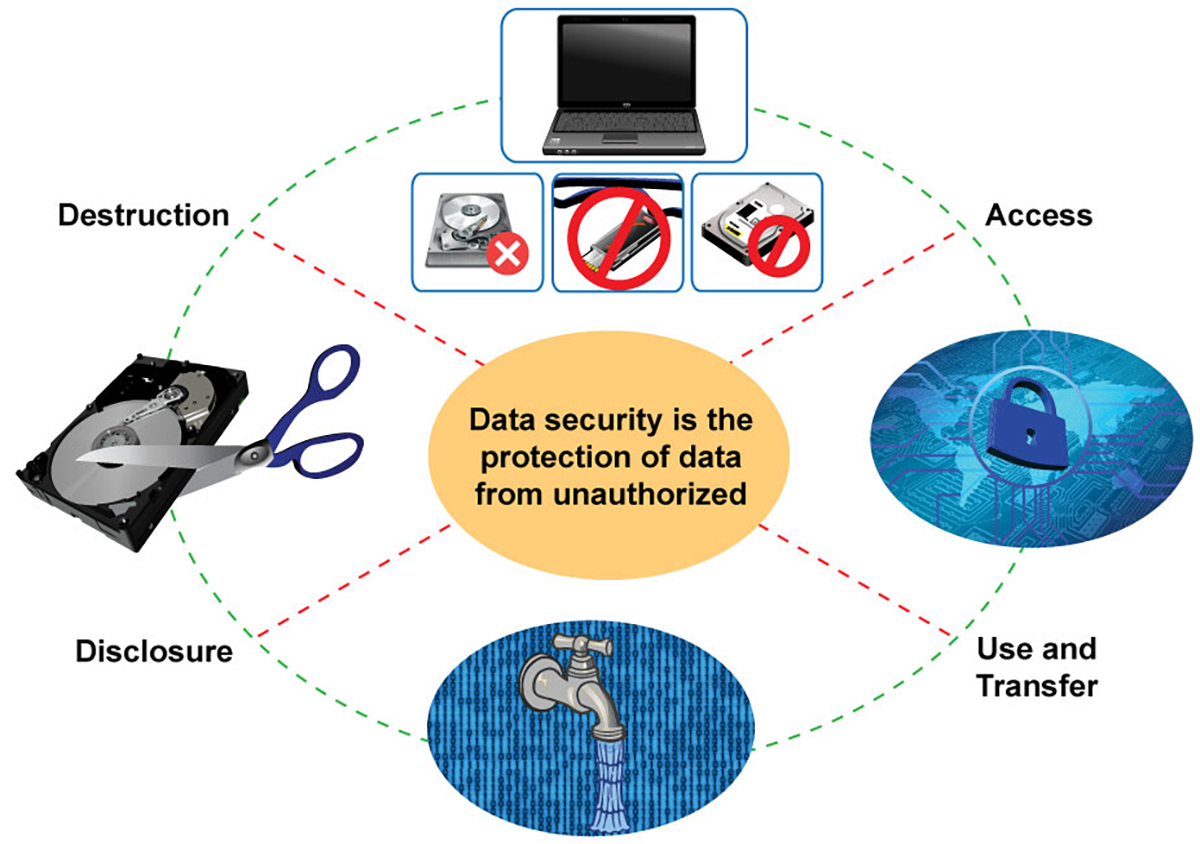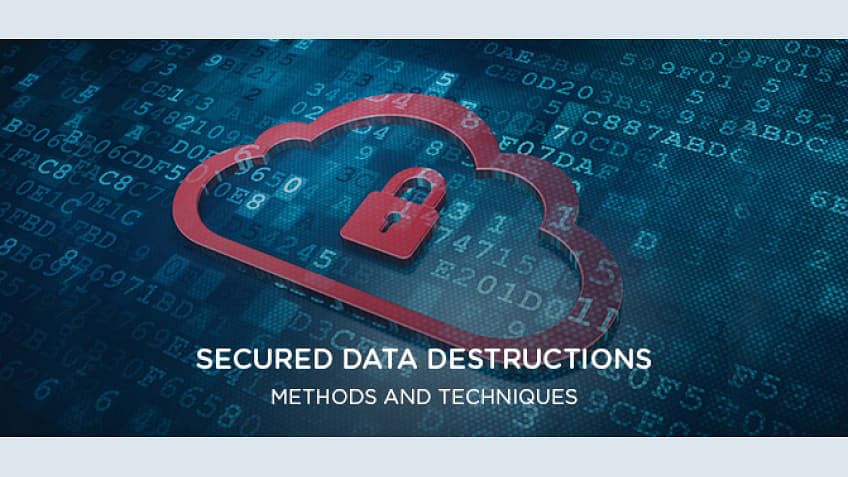The Essential Nature of Data Damage in Upholding Computer System Protection Services and Protecting Versus Unauthorized Access
In an era where data violations and identity theft are significantly common, the value of effective information devastation can not be overstated. Different approaches, from information wiping to physical devastation, serve as essential safeguards against unauthorized gain access to.
Value of Data Devastation
In a significantly digital world, the relevance of data damage can not be overemphasized. As companies accumulate huge amounts of sensitive details, the possible consequences of stopping working to appropriately dispose and handle of that information come to be increasingly severe. Data breaches, identification burglary, and company espionage present substantial threats, underscoring the requirement of reliable information destruction practices.

Furthermore, as modern technology advances, so also do the techniques by which harmful stars seek to manipulate sensitive info. Organizations has to remain vigilant and positive in their data devastation strategies to secure versus these evolving risks. By focusing on information destruction, companies not only secure their possessions yet likewise foster trust amongst stakeholders and customers, showing a dedication to liable data monitoring and safety and security techniques.
Approaches of Effective Information Damage
To make certain the permanent and total devastation of sensitive data, companies can utilize a selection of efficient approaches customized to their specific requirements. Among one of the most usual approaches is data wiping, which includes using specialized software to overwrite existing information several times, making healing practically difficult. This is specifically useful for solid-state drives and hard drives, where standard deletion methods are insufficient.
One more efficient method is degaussing, which uses strong electromagnetic fields to interrupt the magnetic domains on storage media, making the data irretrievable. This method is especially matched for magnetic storage space devices, such as disk drive and difficult disks.
Physical destruction is also a practical option, entailing the shredding, squashing, or incineration of storage space gadgets. This method guarantees that information can not be recuperated, making it optimal for organizations handling extremely sensitive details.

Conformity With Data Security Rules
Organizations need to not only focus on efficient information damage approaches but likewise make sure compliance with information defense regulations that regulate just how sensitive information is managed and dealt with. Sticking to these policies is necessary for guarding individual data and keeping customer depend on. Regulations such as the General Data Protection Policy (GDPR) in the European Union and the Medical Insurance Portability and Accountability Act (HIPAA) in the United States impose stringent standards on information administration, which consist of requirements for the secure disposal of sensitive information.
To achieve compliance, organizations their explanation must execute thorough information devastation policies that align with these lawful structures. This consists of determining data that needs damage, establishing protocols for secure methodsâEUR" such as shredding physical media or using software application that meets industry criteria for information wipingâEUR" and keeping in-depth records of destruction activities. Regular audits should be performed to make sure adherence to these plans and to recognize any type of potential locations for enhancement.
Failing to abide with information defense guidelines can lead to considerable legal implications, consisting of hefty penalties and damage to a company's credibility. Therefore, incorporating compliance right into data devastation practices is not just a legal commitment however additionally an essential element of a durable information security method.
Repercussions of Poor Information Handling
Poor data handling can cause extreme consequences that prolong past prompt functional setbacks. Organizations might encounter substantial financial losses because of information violations, which frequently lead to pricey removal initiatives, legal charges, and governing penalties. These economic implications can strain sources and impede development, ultimately affecting an organization's profits.
Additionally, bad information handling can significantly damage a company's reputation. Stakeholders, companions, and consumers may lose rely on an entity that stops working to secure sensitive info, bring about decreased client commitment and potential loss of service chances. This erosion of trust can take years to rebuild, if it can be restored in all.
In addition, companies might deal with legal implications developing from non-compliance with information protection regulations. Such offenses might lead to charges and investigations, compounding the economic problem and further staining the organization's photo.
In the world of cybersecurity, insufficient data monitoring click over here now methods can create susceptabilities that make systems a lot more at risk to unauthorized accessibility and cyberattacks. Eventually, these consequences emphasize the important value of executing durable data handling treatments to safeguard delicate information and keep organizational integrity.
Finest Practices for Secure Data Disposal


First of all, information need to be classified according to its sensitivity. Sensitive info calls for extra rigorous disposal methods, such as shredding physical files and using sophisticated software program for electronic information cleaning. Utilizing qualified information devastation services guarantees compliance with industry regulations and requirements.
Second of all, organizations must carry out an information disposal plan that mandates routine audits. This policy ought to detail the procedures for data retention and destruction, guaranteeing that obsolete data is dealt with quickly and safely. Training employees on these methods is necessary to fostering a society of protection recognition.
Last but not least, preserving comprehensive records of disposed information boosts responsibility and offers a clear audit trail. This documentation should consist of the sort of data damaged, the approach utilized, and the date of disposal.
Verdict
Embracing durable methods such as information cleaning, degaussing, and physical destruction, together with conformity with regulations like GDPR and HIPAA, is necessary for safeguarding delicate details. Overlooking appropriate information disposal practices can lead to serious repercussions, consisting of data breaches and legal consequences.
In a period where data breaches and identity theft are significantly widespread, the significance of efficient information devastation can not be overemphasized. data destruction. Data breaches, identity theft, and business espionage present substantial risks, highlighting the requirement of efficient information devastation techniques
Conformity with guidelines such as GDPR and HIPAA requireds that companies apply stringent data protection steps, including the safe destruction of data at the end of its lifecycle.
By prioritizing data damage, companies not only protect their properties yet also foster count on amongst stakeholders and clients, demonstrating a dedication to liable data monitoring and protection practices.
Organizations must not only concentrate on effective data damage methods yet also make certain compliance with data security guidelines that govern how delicate details is handled and disposed of.
Comments on “Optimizing Cyber Security through Advanced Data Destruction Techniques”